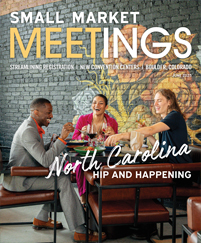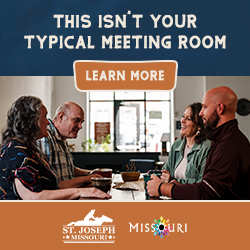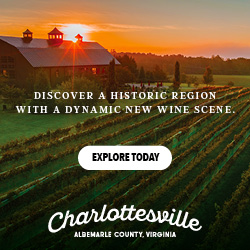Meeting planners often get caught up looking for the newest facilities with state-of-the-art technology and up-to-date amenities. But sometimes, the most interesting meeting destinations are those steeped in time, and sometimes the most inspiring meeting venues are those that have a story — or a century’s worth of stories — to tell. Whether they’re tiny towns or cosmopolitan cities, these Indiana communities are known for their historic offerings.
New Harmony
When visitors arrive in New Harmony, they find a town preserved much like it was 200 years ago, unmarred by fast-food joints and strip malls. “It’s just the ambiance when you come into New Harmony,” said Chris Laughbaum, owner of Kola Property Management. The Harmony Society founded the community in 1814 for German Lutherans, and industrialist Robert Owen bought the town in 1825 to create a utopian society, renaming it New Harmony.
Roughly half the town is a nationally designated historic district, and many historic buildings are available for events. The 1822 Community House No. 2 underwent a massive restoration in 2012. The feast room works well for events, Laughbaum said, and a new elevator makes all three floors accessible. Thrall’s Opera House, built in 1824 and converted to a theater in 1859, can seat 160 people, and the Ribeyre Center, a former 1920s gymnasium, can hold 600 people. At the Working Men’s Institute, the “McClure Room for the Dissemination of Useful Knowledge” is available for groups of 50.
Not every event space in New Harmony is historic. The 92-room New Harmony Inn and Conference Center has 4,200 square feet of flexible meeting space, and the McLeod Barn Abbey is a retreat center on the edge of town.
Fort Wayne
Fort Wayne is Indiana’s second-largest city, but it began as an outpost beyond the edge of civilization when the U.S. Army built the fort in 1794. Although the original fort is gone, today’s Old Fort Wayne replica on the original site re-creates life there as it was in the 19th century.
The 225,000-square-foot Grand Wayne Convention Center and the 13,000-seat Allen County War Memorial Coliseum are the city’s major event spaces, but a “hidden gem that’s gaining legs” is the Genealogy Center at the Allen County Public Library, said John Felts, Visit Fort Wayne marketing and communications specialist. The center houses the nation’s second-largest genealogy collection, and the library has five meeting rooms, a 230-person theater and a genealogist available for research and workshops.
Of the downtown History Center’s 26,000 artifacts, the largest is the building itself: the 1893 city hall and jail. The Shields Room, the former City Council Chamber, is available for 160-person seated meals, and groups of 50 can also reserve two boardrooms.
Groups can tour the restored 1902 Allen County Courthouse, taking in original murals, sculptures and stained glass bejeweling the rotunda dome, and the working courthouse is available for events on weekends.
Nashville/Brown County
The small hamlet of Nashville is the county seat and the only incorporated municipality in Brown County. Artists flocked to the town in the late 1800s, but when T.C. Steele moved there in 1907, it solidified Nashville’s cache as an artist colony. The Brown County Art Gallery and the Brown County Art Guild still operate today, and groups can visit a variety of museums, galleries and studios, including glass, photography, pottery and painting studios.
The 23-room Artists Colony Inn has a large meeting room for groups of 50 and a smaller space for up to 20 people. The Brown County Inn offers 86 guest rooms and a recently remodeled dining room with vaulted wood-beam ceilings. The largest of the inn’s six meeting rooms is the 3,200-square-foot Town Meetin’ Hall that can be broken into three smaller spaces. The Seasons Lodge is one of Nashville’s largest function spaces, with nearly 12,000 square feet of flexible meeting space, and although the Waycross Camp and Conference Center has event space for groups of up to 100, a major draw is its activities: a climbing wall, a ropes course, a zip line, canoeing, archery, biking and hiking.
Richmond/Wayne County
Richmond’s beginnings date to 1806, when several Quaker families settled in the area, and the Quaker presence in Wayne County is still felt. The Historic Meeting House at New Garden in Fountain City is a 120-person event venue housed in an 1858 Quaker meeting hall that comes with oak pews, Wi-Fi and state-of-the-art audiovisual amenities. The hall is located in an Amish community where more than 150 families live and work, and a popular stop is Fountain Acres, a bulk food grocer, bakery and deli.
The Quaker Hill Conference Center in Richmond offers two conference houses with overnight accommodations for up to 50 people. The original 1855 Evans House has several meeting rooms and a dining room for groups of up to 60, and the Woodard Lodge offers a lobby and conference room for functions. An outdoor amphitheater in the nearby woods can seat more than 100.
Eight buildings, including the historic Friends Meeting House, constitute the Wayne County Historical Museum where artifacts showcase the region’s history from the arrival of the Quakers to the 20th century. The museum can host events for up to 150 people, and its largest meeting space is 1,800 square feet.












